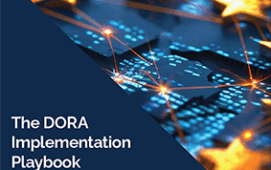The counterparty credit risk exposure of 12 US bank holding companies and international banking companies to monoline insurers has led to some $54 billion in write-downs by the banks since 2007, according to a new analysis by the International Swaps and Derivatives Association, Inc. (ISDA).
ISDA conducted the study as part of its examination into the losses incurred in the US banking system due to counterparty defaults on OTC derivatives. An earlier paper on the subject, based on data from the US Office of the Comptroller of the Currency (OCC), showed such losses for US banks amounted to only $2.7 billion from 2007 through the first quarter of 2011. After further investigation, it became apparent that the transactions involving subprime mortgage risk taken in synthetic form (via derivatives) were booked in firms outside the US banking system.
The paper published by ISDA today follows from that research. Its major findings include:
· From 2007 through the first quarter of 2011, the 12 firms included in the study took aggregate credit provisions in the form of Counterparty Valuation Adjustment (CVA) Charges of approximately $54 billion on their monoline exposures.
· The monoline exposures and corresponding CVA Charges were primarily related to real estate and consisted of credit default swaps (CDS) on pools of mortgage-based securities.
· Four of the banks referenced above accounted for $43 billion of CVA Charges. While large, the losses of the four institutions on cash mortgages were far greater.
· Counterparty credit losses on plain vanilla derivatives products were insignificant compared to these charges.
· Derivatives with insurance companies are generally not subject to regulation under the Dodd-Frank Act.
“This and the earlier study on losses from counterparty defaults provide additional evidence that structured real estate risk taken in synthetic form resulted in a large majority of losses taken by banks on derivatives during the crisis,” said Conrad Voldstad, ISDA’s Chief Executive Officer. “Losses on plain vanilla products occurred but were relatively modest as the earlier paper revealed. Serious risk management mistakes were made with real estate and insurance companies, but the industry’s track record on plain vanilla product needs to be reconsidered.”
The full ISDA paper “Counterparty Credit Risk Management in the US Over-the-Counter (OTC) Derivatives Markets, Part 2: A Review of Monoline Exposure” is available on ISDA’s website
Subscribe to our newsletter




